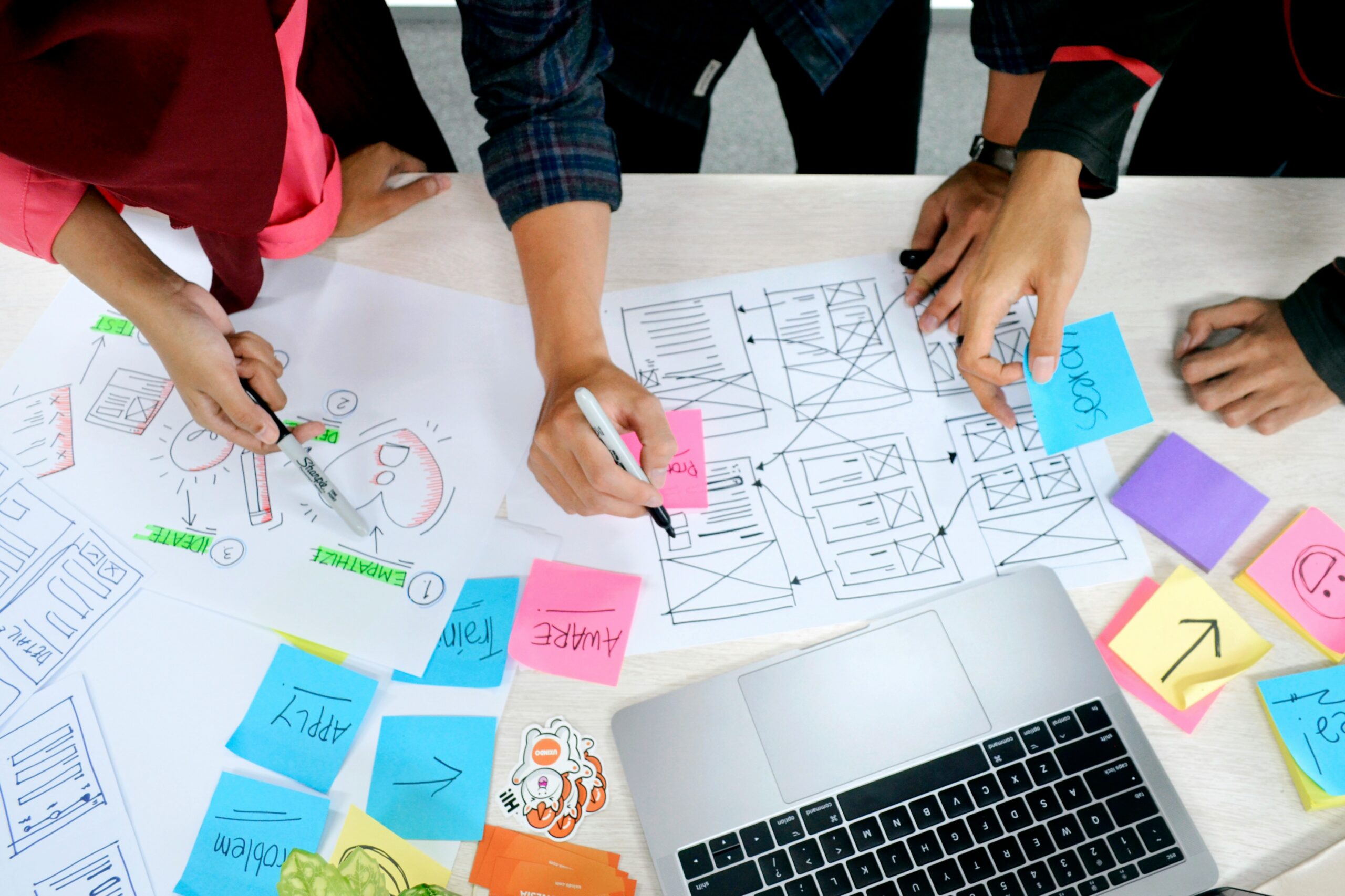
The canton of Lucerne reaches new heights with emineo
March 2024: With emineo playing a key role in planning and implementation, the canton of Lucerne successfully launched SAP4YOU. AfterRead more »
Albeit being conservative and averse to any change, the public sector is in the midst of a profound transformation.
Design thinking has facilitated emineo in successfully driving transformation and innovation in public administration for the Canton of Lucerne, for example. Designing changes also offers professionals from the Design and User Experience division even more potential in the future.

Organisations in public administration have always struggled with limited resources. Since the COVID pandemic, this sector has increasingly been in focus: We have all vividly experienced the necessity and consequences of a more or less well-functioning public administration. The expectations of citizens are constantly rising – technological progress is not only fast but also full of new possibilities. The issues with the greatest leverage for significant and measurable improvement need to be identified, as well as the technology/technologies that support them most effectively and efficiently.
Current challenges in the public sector
Design thinking: explorative problem solving as well as transformation driver
The concept of design thinking is known as an explorative and iterative approach to problem solving: The design thinking method helps to gain a deep understanding of the needs of the target group, to define challenges and problems quickly and specifically, and to generate new ideas. In iterative steps, they then quickly develop initial prototypes, test them with users and constantly improve them. Design thinking can also help with change processes by advancing them very effectively and efficiently.
In the beginning of 2022, emineo introduced special innovation consulting services to specifically support organisations in developing and managing innovation throughout the organisation. Many of our public sector clients have already successfully used the pooled skills of this interdisciplinary unit for example, the IT department of the Canton of Lucerne. In the innovation workshops we have conducted, we have used design thinking approaches, among other things, which have initiated profound changes.
More fun, fewer organisational silos: generating new things together creatively and with fun
Our clients are extremely satisfied with the results: The energy level during the workshops was consistently high. The creative and goal-oriented methods inspired the participants. By involving end-users from the beginning, we ensure that we address the right problems. By involving participants as well as experts from different disciplines, we break down silos. The whole team is aligned and shares a sense of ownership. Participants get into a flow state through playful or creative activities. Time flies and even with serious topics, working “on something new” becomes fun.
After our workshops, participants tell us how much they appreciate this way of working, which is new to them. They spread the word, the message, the enthusiasm and become internal ambassadors. When people are efficient and happy at work, their colleagues notice it too. This creates a ripple effect throughout the organisation, triggering a positive upward spiral of change that ultimately impacts the corporate culture.
No successful transformation without people – here are 5 tips.
If you are in the middle of a transformation (you probably are), here are a few tips to navigate the (possibly uncertain) waters more smoothly:
1. Encourage everyone to come up with ideas.
Listen to them. You will be surprised how much creativity you will discover in your organisation.
2. Driving innovation means challenging what already exists.
Progress has never been made by trying to maintain the status quo.
3. For some, change is too fast.
They are not against progress but they want to make sure that the company does not fall into chaos or that they can also generate good added value in the new set-up. Involving them in the process and letting them participate will make you find better solutions.
4. Stay curious and open-minded throughout the process.
Innovation is a discovery process. Never have all the answers ready from the start. If you already have all the answers, it would not be innovation.
5. Do not try to be perfect, trust the process and keep an open mind.
Ideas are likely to change a lot during the process. There will be a time to refine your ideas once all uncertainties have been cleared.

Transformation as a design process: Designers to get more involved
I see a pioneering trend. The demand for facilitation will grow and with it the demand for expertise in topics such as user experience, innovation and change management. Designers will be more and more involved in strategic conversations – thanks to their skills in creative methods as well as supporting exploratory processes, their focus on human needs and their sense of design. Just as we have moved from designing products and services to rethinking processes, we will move from rethinking processes to redesigning corporate culture. Along the way, we will continue to discover new methods to facilitate change. We are living in very exciting times and I am grateful to be participant and co-creator of this exciting and disruptive adventure.
eAcademy
The emineo eAcademy offers courses to learn innovative methods and ways of thinking (including Design Thinking, Lean Start-up and Facilitation). If you would like to discover new ways of working or find out how your team or company could benefit from them, just drop me an email at pascal.geronimi@emineo.ch. I will be happy to answer any questions you may have.

March 2024: With emineo playing a key role in planning and implementation, the canton of Lucerne successfully launched SAP4YOU. AfterRead more »

February 2024: emineo wins public contracts worth millions Read more »